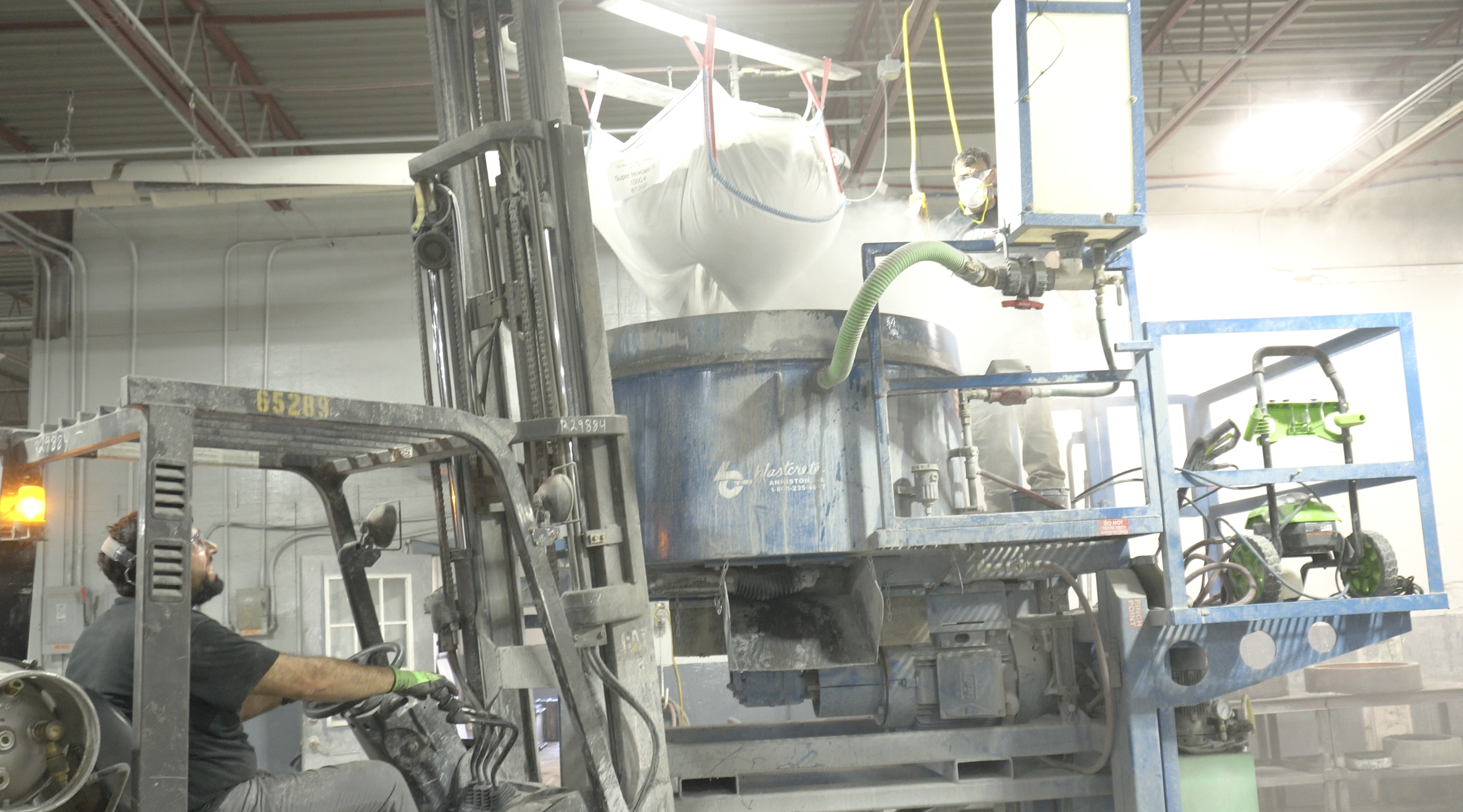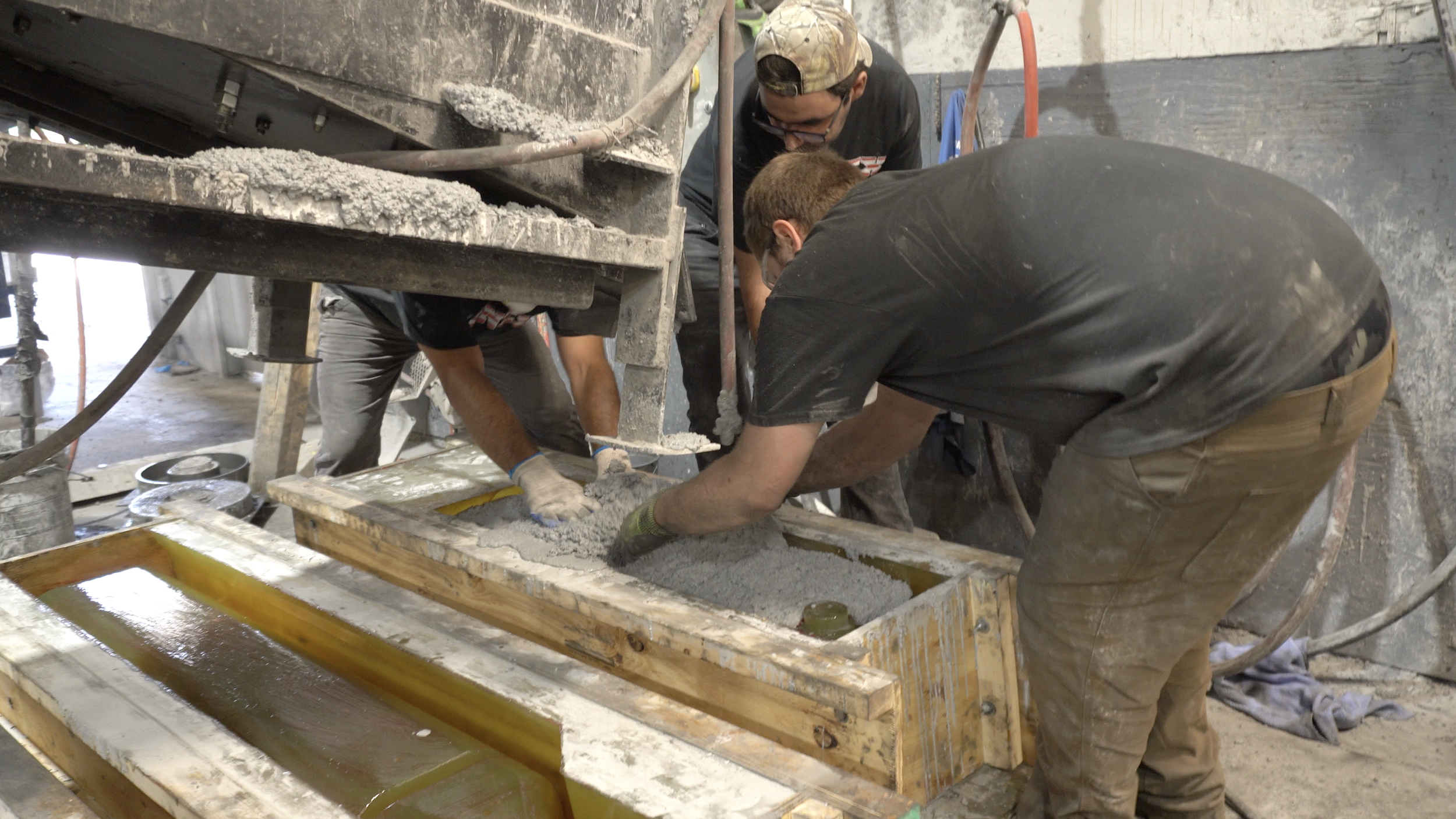Domestic Engineered Solutions for Your Toughest Precast Challenges: Step Three
Cast (Mixing and Pouring)
The Onex team knows that the success of every precast shape starts with chemistry.
A lot of factors go into the mixing and pouring process including water content, material additives, mixing method, vibrating time and frequency, selecting the right mold release agent, and setting proper curing conditions. These factors all vary depending on the chemistry of the material and the size and shape of the mold.
Once the mold is designed, the refractory materials for the shapes need to be selected, mixed, vibrated, and poured into the prepared mold. Some shapes may benefit from different types of refractory and some may need certain additives so they can hold up during whatever process they will be used in.
Different materials react differently to different mixing actions as well. At Onex, we use a variety of equipment – including a pan mixer, a rotary mixer, and a Hobart mixer – to ensure the right materials get the right mix.
Knowing the importance of this step, we continue to invest in various mixer technologies. With millions of pounds of castable poured, the Onex team is prepared for virtually any material type and equipment requirements because we’ve seen first-hand how materials react differently to the various mixing “actions” and different mixer styles.
When the material is mixed to perfection, the mold is placed on a vibration platform while the wet material is poured into it to settle out air pockets that form during mixing. Onex has invested in precisely controlled (rheostatic) vibration equipment, including large vibrating tables as well as a unique 60” x 70” vibrating “floor”.
Special care is taken to allow for proper air curing in a strictly controlled environment for temperature and humidity. Our team has developed multiple techniques for maintaining the correct humidity in molds. The curing process is overseen by Onex’s hands-on staff.
What this all adds up to is precast shape success for Onex customers. One customer – a steel pipe, tube, and electrical conduit manufacturer – was making precast on-site which was proving to be very labor-intensive and difficult to staff.
Outsourcing this process to Onex (after initially hiring us for a furnace rebuild (link to furnace page) and seeing our dedication to making things better) reduced their precast shape production process from a full week to a single day.
The team at Onex knows each step must be executed perfectly in order to ensure surface quality, minimize air pockets, and create sharp edges with minimal flashing. After curing, Onex dries out the shapes based on a particular time and temperature program using engineering parameters. As a furnace builder, Onex has extensive in-house furnace options for dry-out to accommodate different temps, shapes, and sizes.
These casting steps are critical to ensuring that the customer receives the exact product and properties they expect, or even better. Onex’s expert precast team is ready to talk about your precast needs. Stay tuned for the next process step in our precast solutions installment. (link to next)



